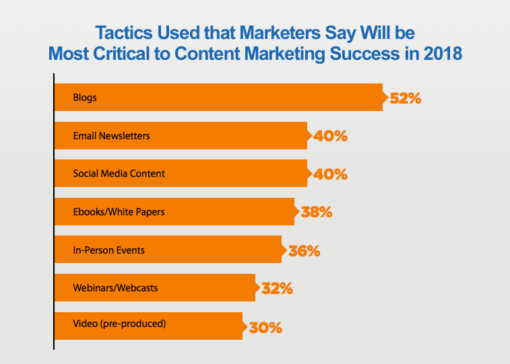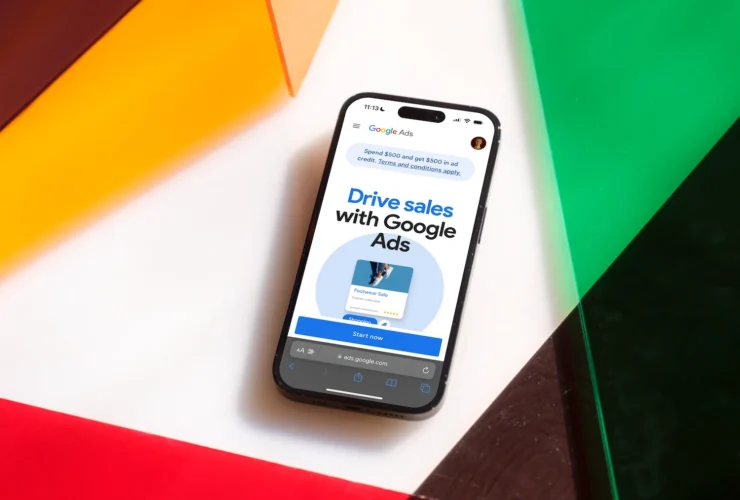Here’s Why You Should Outsource Your Content Marketing
When it comes to marketing your ophthalmic practice, content marketing is king. Content marketing is the process of sharing content such as blog posts, informational videos, photos, infographics, and more to your audience for the purpose of generating leads and attracting new patients to your practice.
But if you’re just getting into content marketing for the first time, it can seem daunting. Most likely, your team is stretched too thin – between patient visits, administrative duties, and the pressures of running a practice, it’s just hard to find the time.
Small practice? It’s likely you don’t have someone on staff who is dedicated to marketing (or maybe that job falls on your shoulders). And even if your practice is large enough – and lucky enough – to have a dedicated marketing specialist, giving them more duties may not be feasible.
That’s why you should consider outsourced content marketing.
Afraid of Content Marketing?
There are many reasons we hear from people who haven’t started content marketing:
“I didn’t fully understand what content marketing could do for us”
“We were afraid of quality issues…how can we consistently produce high-quality content?”
“Isn’t it expensive?”
If you’ve had any of those questions yourself, take a look at these stats:
- Content marketing leaders experience 7.8x more traffic than those who don’t practice content marketing (Source: Aberdeen)
- On average, content marketing costs 62% less than traditional marketing and generates about 3 times as many leads. (Source: DemandMetric)
Step 1: The Content Marketing Plan
Before you can have an effective content marketing strategy in place for your practice, you need to lay a good foundation. The first step is to produce a content marketing plan.
“You can’t expect to build a house that stands without a good blueprint and a solid foundation.”
A good content marketing plan will begin with the end goal (“our practice wants to increase new patient visits by 20% over the next 6 months”), and will work backwards to develop stories and content that will resonate with your audience and help you reach your end goal. Your content marketing plan should detail the following things (among others):
- The service you’re trying to market (for example, LASIK)
- Your target demographic and their preferences (socioeconomic status, lifestyle preferences, what social media platforms they are active on, how they spend time and money, etc)
- What types of content they tend interact with (videos, longform content, infographics, etc)
- What categories of content you’ll share (informational/educational, humorous, etc)
- How often you’ll share this content with them, etc, etc…

These are just some elements of a good content marketing plan, but there are many others to consider. The more detailed your content marketing plan, the better. After all, you can’t expect to build a house that stands without a good blueprint and a solid foundation.
Step 2: Research Outsourcing Options
The next step in your content marketing journey is to consider your options for outsourcing. There are basically two ways of doing this: freelancers and agencies, and there are pros and cons to each.
Freelancers can provide a more cost-effective option, but results may vary. Many ophthalmic practices have had problems with the quality and consistency of freelancers’ content. If you do find a capable and prolific freelancer to consistently produce good content for your practice, they’ll likely be in high demand, so do whatever you can to keep them.

Another thing to keep in mind: for a niche industry like ophthalmology, the content needs are very specific. Anyone producing content for ophthalmology will need domain expertise to know what they’re actually writing about, so that’s a factor to consider. This industry-specific knowledge can make finding a freelancer who is capable of producing good content even more difficult, and can mean that more effort is required on your part to do some hand-holding.
For many, hiring an agency is a more appealing option. Agencies can sometimes be more expensive than freelancers, though it’s not always the case. Unlike freelancers, however, agencies can quickly scale up content production if you find messages and stories that are resonating with your audience.
And remember, content marketing costs 62% less than traditional marketing and generates about 3 times as many leads, so even if you’re scaling up your spending on outsourced content marketing, you’re very likely to see an increase in leads and new patient visits. It pays for itself many times over.
Worried about the quality of content you’ll get? Think all of this sounds crazy? It’s not. Turns out that 64% of marketers outsource their writing. (Source: TopRankBlog)
Step 3: Creating Systems
The system you create to manage your outsourced content marketing will vary depending on who you choose to create the content (freelancer vs. agency), what your end goal is (attract new patients, increase awareness, etc), and any number of other factors.

This is where an editorial calendar comes into play. An editorial calendar will take the goals and research outlined in your content marketing plan and put them into action by determining how often you’ll push put content, how you’ll share it, and how you’ll fill up a pipeline with lots of content so you don’t get behind.
Scheduling and automating your posting and sharing of content is another important part of creating a manageable content marketing strategy. It’s not essential, but if can make your life much easier if you’re able to automate as many aspects of content marketing as possible. Scheduling and automation tools are additional items that an agency can offer as part of their content marketing services.
Step 4: Tracking Progress
Content marketing can take some time to scale up and see tangible results – like anything in life that’s worth doing, it can take time, and it’s worth doing well.
This is where tracking progress comes into play. Ideally, your content marketing provider should work with you to determine the reach of the different content you’ve put out there – things like views, click-through-rate, social media reach, and more.
Tracking your progress is essential to determining the ROI of your content marketing investment, and if you want to see the best ROI possible, consistency is the name of the game. Even the best content marketers with the most experience will lose out to those who consistently create high-quality content.
It’s simple: the practice who produces content the most consistently wins. They’ll attract more patients and grow their businesses more than those who share content occasionally (or not at all).
Conclusion
Content marketing is an effective method of marketing for almost any online business. The importance of content marketing continues to grow each and every year, so if your ophthalmic practice hasn’t yet started, you should get going.
If you have started down the road of content marketing but have found that you don’t have enough time to give your content marketing the attention and effort needed to get the desired results, something needs to change.
This is a big decision that will have a significant impact on your overall marketing results, so you need to make it carefully. The tips & tricks we’ve outlined here will help you ensure you’re getting a good ROI for your investments (and hopefully have made content marketing less scary).
Need some help with your practice’s content marketing? Let our team of marketing experts assist your practice with a robust content marketing plan.








